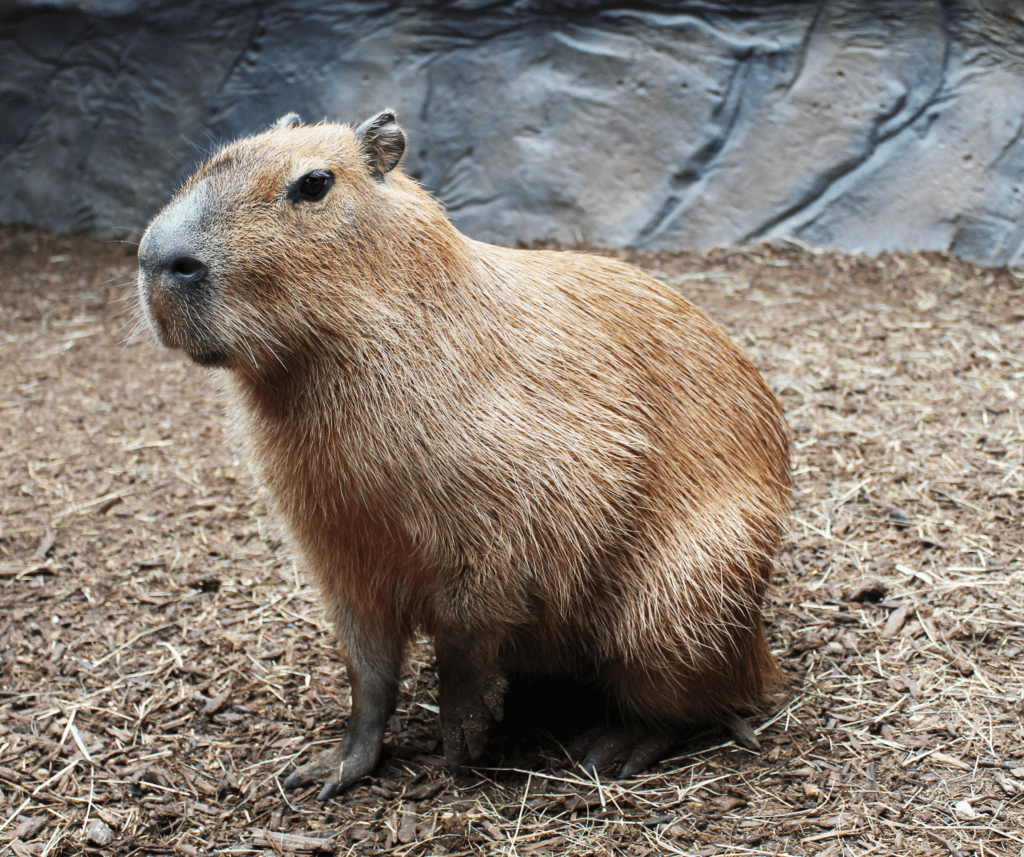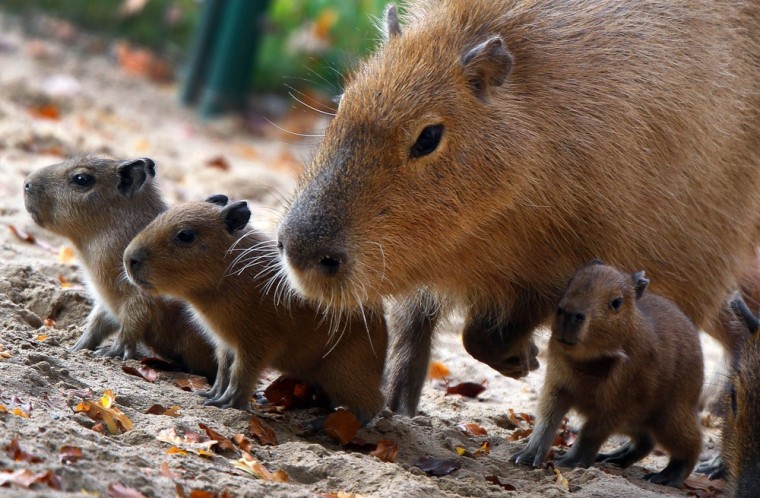Have you ever wondered if capybaras, those huge guinea pigs you see online, are dangerous? You’re not alone. The world’s largest rodents, capybaras are found in South America and have an unique appearance and size that has raised many questions about their true nature.
Are they aggressive? Do they bite or attack people? Will they spoil belongings or crops they get away into the wild? Before you get too involved, right here’s the good information: capybaras are usually very chill animals and not risky to human beings at all. Surprised? Don’t be. Despite their huge size, capybaras are herbivores and very social creatures that tend to keep away from confrontation. Read on to get the whole scoop on these charming and misunderstood creatures.
Are you Thinking of Buying a Capybara?
| Topic | Key Points |
|---|---|
| Introduction | Capybaras are large rodents from South America, often misunderstood. They are generally not dangerous to humans. |
| What is a Capybara? | Largest living rodents, native to South America. Herbivores with a social nature, living in groups. |
| Capybara Behaviors | Typically gentle and social, but may act aggressively if threatened or during certain situations. Requires caution and respect. |
| Keeping Capybaras as Pets | Requires secure housing, handling with care, securing access points, providing enrichment, and regular vet visits. |
What Exactly Is a Capyara?
Capybaras are the largest living rodents on this planet. Native to South America, those semi-aquatic mammals are sometimes associated with guinea pigs and porcupines. Capybaras have sturdy, barrel-shaped bodies, short snouts, small ears, and almost no tail. Adults usually weigh between 77 to 150 pounds and stand about 2 feet tall at the shoulder.
These gentle giants stay in dense forests and grasslands within the Amazon basin, as well as in Central and South America. They are herbivores that feed on aquatic flowers, grasses, fruits, and tree bark. Capybaras are well suited for life in and around water tanks to their webbed feet, they are able to stay submerged for up to 5 minutes. They tend to be crepuscular, which means most active at dawn and dusk.
Capybaras are very social animals that live in groups of 10 to 30 indviduals. They are playful, vocal and tend to get along with most of the other animals. Female capybaras, referred to as sows, supply start to litters of 4 to eight younger after a gestation of about 5 months. The babies, referred to as pups, can eat solid food within a week of start however continue to nurse for up to four months.
While capybaras pose no real threat to humans and have a tendency to avoid disagreement, their size and sharp enamel shows they’re capable of causing injury if provoked. However, unprovoked attacts on human beings are extremely uncommon. Capybaras are categorized as least difficulty via the IUCN due to their big and abundant populations in South America.
Though they are hunted for their meat and hide in some areas, most populations remain stable and some are even increasing.
In summary, capybaras are captivating, semi-aquatic creatures that inhabit South American forests and grasslands. Despite their big size, they have a tendency to be pretty gentle and social, getting together with most animals. While technically rodents, their look and way of life are pretty unique. Capybaras are reall one of nature’s most interesting animals.
Capybara Behaviors: Gentle Giants or Aggressive Rodents?
Capybaras are the biggest rodents in the world, but does their size lead them to danger? These semi-aquatic creatures are sincerely quite gentle and social. However, as with some wild animal, capybaras might also act aggressively in a few situations.
As herbivores, capybaras graze mostly on grass, water plants, and end result throughout the day. They do now not have a predatory or territorial nature. Capybaras are sociable creatures that stay in huge social groupings. They seem to genuinely like human contact and engagement, and they may be energetic and loud. Because capybaras are pleasant and easy to train, many human beings keep them as unusual pets.
However, capybaras may become aggressive if they feel threatened or cornered. Their large size and sharp teeth mean that an attack could potentially cause injury. Capybaras may also act aggressively during mating season or to protect young offspring. Some capybaras may become ill-tempered if not neutered, as increased hormone levels can influence behavior.
Any wild animal should not be approached due to their unpredictable behavior. Maintaining a safe distance and keeping off direct eye contact with capybaras can help save you an aggressive reaction. Because capybaras frequently only attack to guard themselves or their group, the best method to keep away from hazard is to hold a respectful distance.
Although capybaras are commonly pleasant animals, they are still wild animals and will pose a risk due to their size. Capybaras, but, shouldn’t be too dangerous in case you manage them with respect, care, and warning. They are extremely well-known as exceptional pets and zoo animals all around the global due to their joyful and social man or woman. Despite their large size, capybaras are in reality gentle and lovely giants.
Keeping Capybaras as Pets: Tips for Safety
Capybaras are wild animals that need to be kept carefully and properly. Given their weight—they will reach one hundred fifty pounds—these semi-aquatic rats require cautious owners and secure housing. In order to find out the solution to the query “Are Capybaras Dangerous?” and to protect your capybara and all of us else who interacts with it, follow these guidelines.
Provide a large enclosure
Due to their energetic life-style, capybaras require huge areas. Make sure your capybara has get access to both land and water. Its primary enclosure should to be at least 10 ft through 10 ft, however larger is preferable. It should be allowed to roam freely and perform activities that come naturally to it, such swimming, climbing, and walking.
Handle with care
While capybaras appear cuddly, they can bite or scratch if stressed or provoked. Only handle and interact with your capybara while supervised and with extreme caution. Never leave small children unsupervised with a capybara. With regular positive interaction and treats, capybaras can become quite socialized and friendly, but they are still wild animals.
Secure all access points
Double check that there are no ways for your capybara to escape its enclosure. Capybaras can climb and jump surprisingly well for their size. Any doors or gates should be securely closed and locked. Check the enclosure perimeter regularly for any damage or weaknesses, and repair immediately. An escaped capybara can be difficult to retrieve and may become aggressive if threatened.
Provide enrichment
Capybaras are friendly, smart animals that require mental stimulation. Give your capybara puzzles to resolve, treat-shelling out interactive toys, and ordinary playtime with their owners. Depression, behavioral problems, and boredom can result from a lack of stimulation.
Visit a vet regularly
To keep an eye on your capybara’s health, take it for regular examinations to an exotics veterinarian. Annual examinations, immunizations, nail trims, and dental care are required for capybaras. If you see any symptoms of disorder, inclusive of lethargy, lack of appetite, diarrhea, or limping, get your capybara checked out by using a veterinarian right away. Capybaras may be fascinating and rewarding unique pets if given the right care and safety measures.





This page is phenomenal. The splendid substance exhibits the essayist’s commitment. I’m overwhelmed and expect more such unfathomable posts.
Very engaging and funny! For more information, click here: LEARN MORE. Let’s chat!